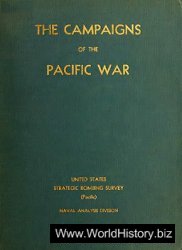Very early instances of historical archaeology in the Americas begin with the 1796 search for evidence of a settlement on St. Croix Island to fix the boundary between the United States and Canada. Half a century later James Hall excavated the foundations of Miles Standish’s home and in 1897 the Association for the Preservation of Virginia Antiquities (APVA), which owned portions of James Island, uncovered the brick foundations of the 1639 church at Jamestown, the first permanent English settlement in the Americas.
In the United States, the preservation movement started during the last quarter of the nineteenth century and led to passage of the Antiquities Act which, in 1906, established the basic preservation policies of the federal government. In 1935, the Historic Sites Act built upon the ideals of noncommercial value and public benefit. Historical archaeology has been associated with the preservation movement and the needs of historic places since at least the 1930s. As it flourished in the context of the preservation movement, its early use was mainly confined to discovering architectural remains.
When historical archaeology got its start in the 1930s, it joined the social history of the time in creating and supporting national mythology. Jamestown and Williamsburg, in particular, provide examples of government and private interest in the historic past. The work done at each and the interpretations offered have greatly influenced the shape of colonial historical archaeology. The 1920s and 1930s saw Rockefeller’s establishment of Colonial Williamsburg, which set new standards for historic preservation and used excavations to inform architectural restorations and reconstructions. Jamestown and Yorktown became part of the National Park Service in 1934. Some of the first large-scale excavations in historical archaeology in the country took place in Jamestown in the 1930s, alongside quite a few other projects, many of them funded by Federal relief monies.
During the 1940s and 1950s, historical archaeology was not tied to the intellectual pursuits of prehistorians who worked in museums and academic departments but to the commemorative pursuits of preservationists and park interpreters. The preservation movement provided a home to archaeologists whose work on historic period sites was not valued by academic colleagues. In addition to undertaking salvage work, historical archaeologists excavated sites mainly for the purposes of reconstruction and visitor interpretation, in some cases rewriting the details of history. For example, Hale Smith’s excavations at the Scott Miller site near Tallahassee and John Griffin’s work at San Luis de Talimali comprised the first archaeology of Spanish missions in Florida. Archaeology systematically dismantled the local mythical identification of certain ruins as ‘missions’ as research revealed sugar mills and plantation buildings instead. JC Harrington excavated Fort Raleigh and Fort Necessity National Battlefield in the late 1940s and early 1950s. Accurate reconstruction of the forts relied upon archaeological information. The 1950s excavations at Jamestown were done in preparation for the 350th anniversary celebration in 1957.
In the 1960s the new social history emerged and had a lasting impact on the field. One of the defining debates for historical archaeology during the 1960s raged as its practitioners struggled to define their work and create a separate profession. Would that profession be historical or anthropological? At times, that debate threatened to destroy the field because it was treated as the primary theoretical issue facing the discipline. However, the founding of the Society for American Archaeology (SHA) in 1967 brought some measure of academic legitimacy to the field.
During the 1970s anthropology as a whole was moving closer to history, although prehistoric archaeology was not following suit. In turn, historians became enamored of anthropology, discovering culture, but not necessarily material culture. Growing awareness of pluralism and social history influenced the topics taken up by historical archaeologists. Much of the research starting in the 1960s and particularly in the 1970s was focused on subcultures of American society. Ethnicity was embraced as a subject to which historical archaeology could make real contributions in anthropology. Charles Fairbanks initiated the historical archaeology of African-Americans with his investigations of plantation slavery. While historical archaeology continued to work on the contact between Native and European Americans, it also developed strong interests in plantations and plantation slavery, the frontier, subsistence, ethnicity, and method.
Within the Preservation Movement, the most influential legislative developments occurred during the 1960s and 1970s. The National Historic Preservation Act (NHPA), passed in 1966, established the
National Register of Historic Places and created the field now known as Cultural Resource Management (CRM). The new requirements of the NHPA stimulated the growth not only of history and architectural history but also of historical archaeology because of requirements for survey and excavation of archaeological sites from all time periods.
The volume of historical archaeology done in the United States increased dramatically with the legislated needs of CRM. The sheer volume of projects driven by legal requirements to evaluate sites in terms of their proven or potential information value (criterion ‘d’ of the National Register eligibility criteria) stimulated the field to define important questions of historic period sites that can be addressed fully only by incorporating archaeology. There would be far fewer archaeologists and far less archaeology done without the organizing structure of CRM. Given the dearth of historical archaeologists in American universities, it is unlikely that archaeologists would have turned their attention toward the research domains of social history without the surge of research supported through CRM. With this impetus, the topics addressed by historical archaeologists increased dramatically to embrace urban settings, occupational categories, landscape, mining, ranching, households, farmsteads, industry, consumer choice, burials, and battlefields along with methodological developments.
In the 1980s archaeology as a whole was beginning a new period of critical self-examination and, in response, reactionary entrenchment. Since then numerous debates have taken place about the pros and cons of processual and post-processual archaeology. Historical archaeology has gone through its own periods of growth and change, and its practitioners have often been the most successful with approaches that seek to uncover intention, social relations, and ideology along with economy, function, and structure.




 World History
World History









